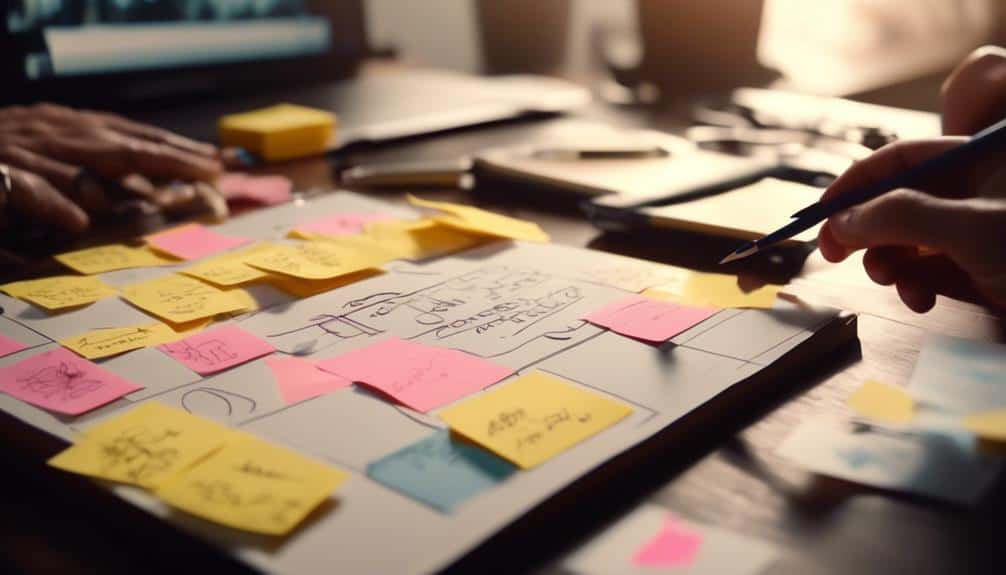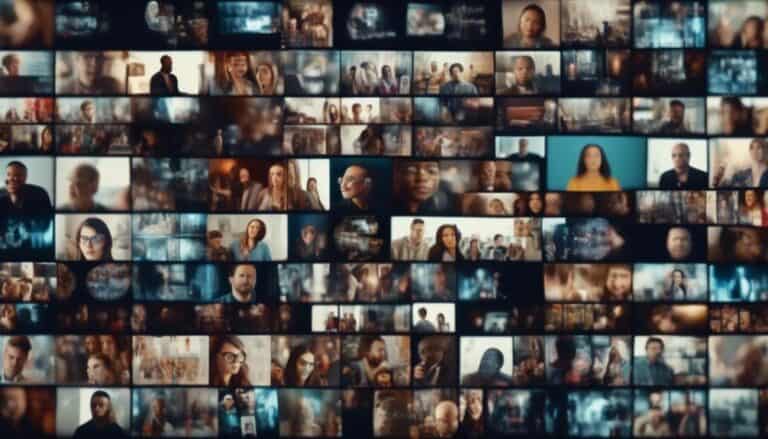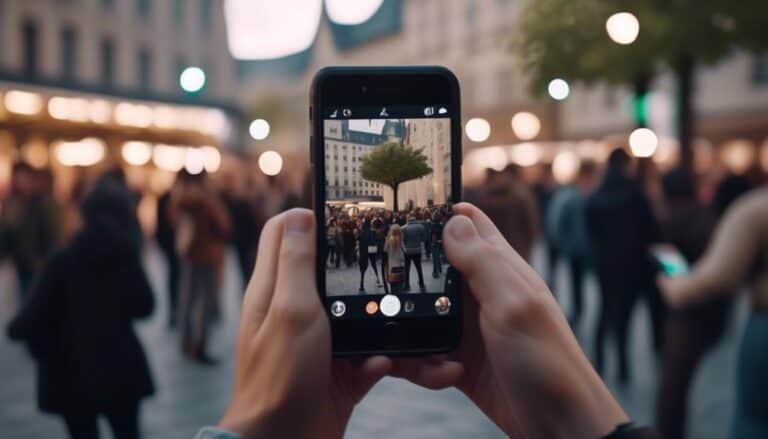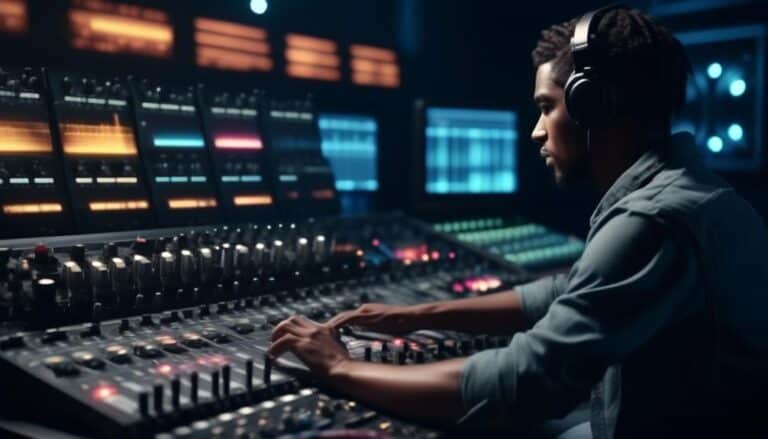The Visual Script: Techniques for Storyboarding Your Video Content
When embarking on the journey of creating video content, think of storyboarding as the compass guiding you through uncharted territories. As you navigate the intricate landscape of visual storytelling, mastering the art of crafting a visual script becomes paramount.
From meticulously planning shot sequences to seamlessly weaving together transitions, the techniques involved in storyboarding are akin to a skilled cartographer mapping out a detailed itinerary. However, the true magic lies in how these visual elements come together to breathe life into your narrative, transforming mere ideas into captivating visual experiences that resonate with your audience.
Key Takeaways
- Storyboarding is essential for seamless flow and visual storytelling in video content.
- Crafting engaging visuals involves creating multidimensional characters and building tension effectively.
- Carefully chosen color schemes and visual elements significantly impact emotions and elevate video content.
- Meticulously planning transitions and scene changes enhances coherence and viewer engagement.
Importance of Storyboarding
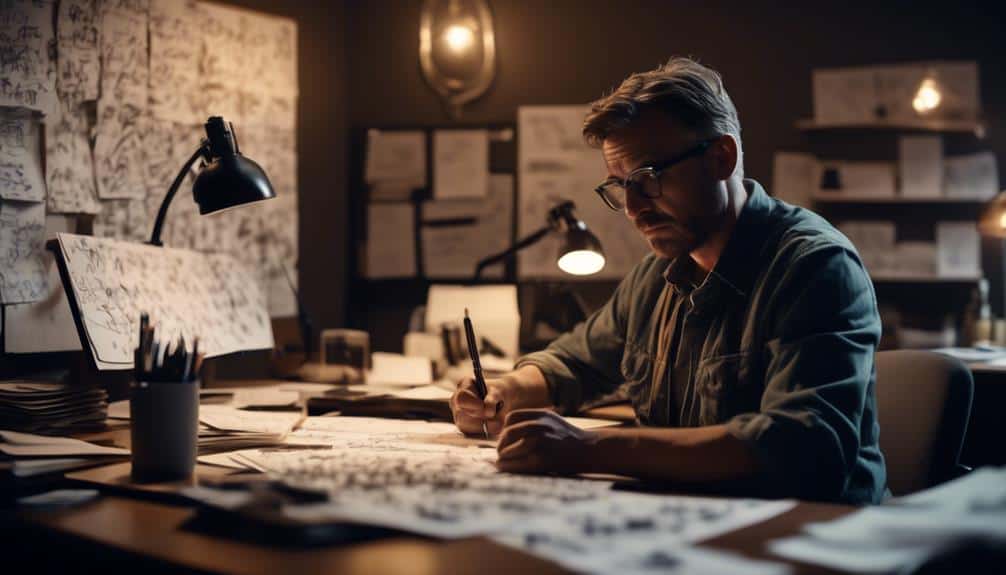
Storyboarding is crucial for ensuring your video content flows seamlessly and effectively communicates your message to your audience. It serves as the foundation for your visual storytelling techniques, allowing you to map out the entire narrative structure before filming begins.
When embarking on this creative brainstorming process, it's essential to see storyboarding as a collaborative effort. Engage with your team to gather diverse perspectives and ideas that can enhance the final product.
Crafting the Narrative Flow
Craft a captivating journey for your viewers by weaving together a seamless narrative flow that compels and engages from start to finish. Dive into the intricacies of storytelling by focusing on character development and pacing to keep your audience hooked. As you embark on this creative journey, remember the importance of setting the mood through strategic camera angles that enhance the overall cinematic experience.
Character Development: Create multidimensional characters that resonate with your audience, making them emotionally invested in the story unfolding before them.
Pacing: Build tension and release it effectively to maintain a rhythm that keeps viewers on the edge of their seats.
Mood Setting: Use lighting, color schemes, and music to establish the atmosphere and evoke specific emotions in your audience.
Camera Angles: Experiment with different angles to add depth and perspective, drawing viewers deeper into the narrative.
Immerse yourself in the art of storytelling, where every frame contributes to the enchanting tapestry of your video content.
Visualizing Shot Sequences
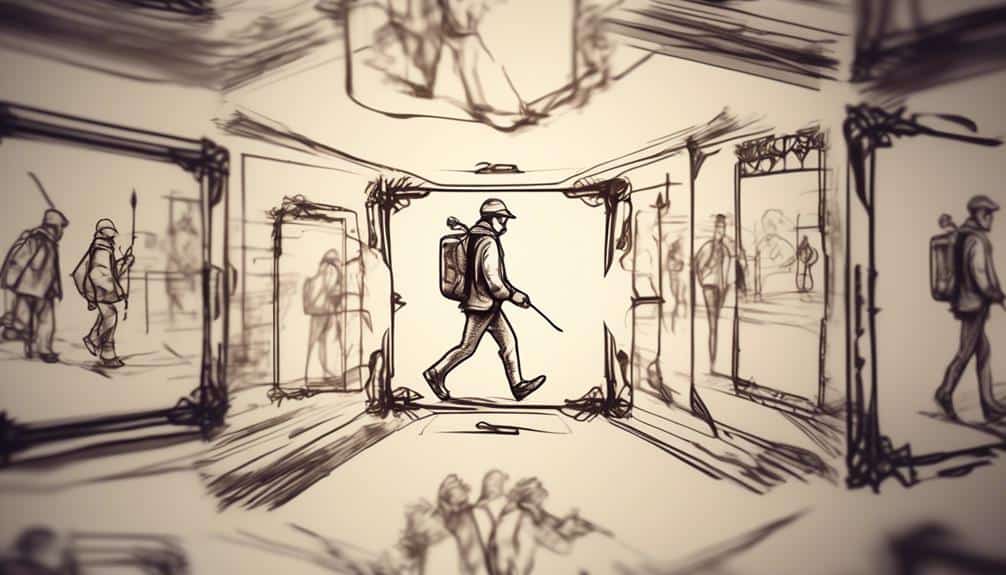
In envisioning your shot sequences, let your imagination choreograph a dance of visuals that will bring your storyboard to life on screen. Shot composition plays a vital role in conveying emotions and messages effectively. Utilize framing techniques to create impactful visuals that resonate with your audience. Consider the shot progression as a means to guide the viewer through your story seamlessly.
To evoke emotion in your audience, carefully plan out your shot sequences. Here is a table to help you visualize different shot compositions and framing techniques:
| Shot Type | Description | Emotion Elicited |
|---|---|---|
| Extreme Close-Up | Focuses on small details, intensifying emotions | Intimacy, Intrigue |
| Wide Shot | Establishes setting, context | Grandeur, Isolation |
| Over-the-Shoulder | Shows perspective of a character | Connection, Tension |
| Low-Angle Shot | Empowers subjects, adds drama | Power, Authority |
Experiment with these techniques to enhance your visual storytelling and captivate your viewers throughout your video content.
Enhancing Visual Elements
Imagine the impact of a carefully chosen color scheme – how it can evoke emotions and set the tone for your video.
Consider the importance of visual hierarchy in guiding the viewer's eye and conveying key information effectively.
These elements can elevate your video content, making it visually engaging and memorable for your audience.
Color Scheme Impact
With the right color scheme, you can transform your video content into a visually captivating masterpiece that engages your audience on a deeper level. Utilizing color theory effectively can evoke strong emotional impacts, enhancing the overall viewing experience. Here are some ways color schemes can impact your video content:
- Create Contrast: Use contrasting colors to make certain elements pop and grab viewers' attention.
- Set the Mood: Different colors can convey various emotions, setting the tone for your video.
- Establish Brand Identity: Consistent color schemes help in brand recognition and recall.
- Guide Viewer Focus: Strategic use of colors can direct the viewer's gaze to key elements in your video, guiding their focus seamlessly.
Visual Hierarchy Importance
Enhance the visual appeal of your video content by strategically organizing elements to create a clear and engaging hierarchy for viewers. When it comes to layout design and composition techniques, consider the following to make your visuals pop:
| Layout Design | Composition Techniques |
|---|---|
| 1. Size Matters | 1. Rule of Thirds |
| Make key elements larger for emphasis. | Divide your frame into thirds horizontally and vertically, placing important elements along these lines. |
| 2. White Space | 2. Leading Lines |
| Utilize blank space to direct focus. | Use lines within your composition to guide the viewer's eyes towards the main subject. |
| 3. Contrast | 3. Framing |
| Play with contrasting colors for impact. | Use surrounding elements to frame the central subject, drawing attention to it. |
Mapping Out Transitions
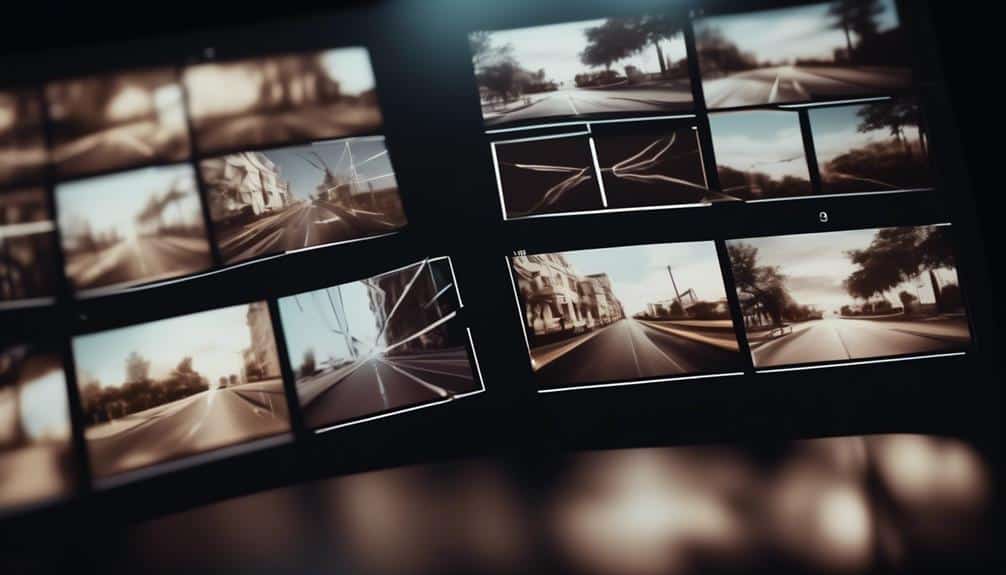
To seamlessly guide your audience through your video content, meticulously plan and craft the transitions between scenes to maintain engagement and coherence. When mapping out transitions, consider the following:
- Match Cut: Seamlessly transition from one scene to the next by highlighting similarities between elements in each frame.
- Fade: Gradually transition from one scene to the next by fading out the current scene as the new one fades in.
- Cutaway: Briefly shift focus to a different scene before returning to the main action to add suspense or context.
- Wipe: Use a wiping motion to transition from one scene to the next, creating a dynamic effect that captures attention.
Incorporating Feedback and Revisions
Embrace the transformative power of feedback and revisions as you sculpt your video content into a captivating and polished masterpiece. When it comes to feedback implementation, view it as a valuable tool that can elevate your project to new heights. Be open to receiving critiques and suggestions, for they can provide fresh perspectives and insights that you may have overlooked.
Engage in a collaborative dialogue with your team or peers, allowing for a dynamic exchange of ideas that will enrich your work.
During the revision process, approach each change with a discerning eye, weighing its impact on the overall narrative and visual flow. Consider how adjustments in one scene may affect the coherence of the entire story. Stay flexible and nimble, ready to pivot in response to constructive feedback.
Frequently Asked Questions
How Do You Ensure That the Storyboard Accurately Represents the Final Video Content?
To ensure accuracy, visualize each scene vividly during storyboarding. Use detailed visuals, noting camera angles, transitions, and key elements. Check for consistency between the storyboard and final video to guarantee an accurate representation of your vision.
What Are Some Common Challenges Faced When Storyboarding Video Content, and How Can They Be Overcome?
When storyboarding video content, challenges like clarity, pacing, and transitions may arise. Overcome these obstacles by sketching diverse perspectives, adding annotations for detail, and using color to signify mood. Creative solutions fuel engaging visuals.
Is It Possible to Incorporate Interactive Elements Into a Storyboard for a More Engaging Viewing Experience?
Sure, you can definitely incorporate interactive elements into your storyboard to create a more engaging viewing experience. By using interactive elements and implementing engagement techniques, you can captivate your audience and make your content more memorable.
How Can a Storyboard Help With Budgeting and Resource Allocation for Video Production?
Storyboarding is your creative roadmap for video production. It helps you visualize scenes, plan shots, and allocate resources efficiently. By outlining each shot, you can estimate costs, time, and crew needs, ensuring budgeting and resource allocation are on point.
What Role Does Color Theory Play in Storyboarding and How Can It Be Used to Enhance the Visual Storytelling Aspect of a Video?
In storyboarding, color theory is your secret weapon. Using color psychology to evoke emotions and establish visual hierarchy, you can enhance the storytelling in your video. Bright hues for energy, cool tones for calmness – paint your narrative vividly.
Conclusion
As you wrap up your visual script, remember that storyboarding is the key to bringing your video content to life.
By carefully crafting the narrative flow, visualizing shot sequences, enhancing visual elements, mapping out transitions, and incorporating feedback and revisions, you can ensure that your video will captivate and engage your audience.
So, grab your storyboard and let your creativity flow as you turn your vision into a stunning visual masterpiece!
